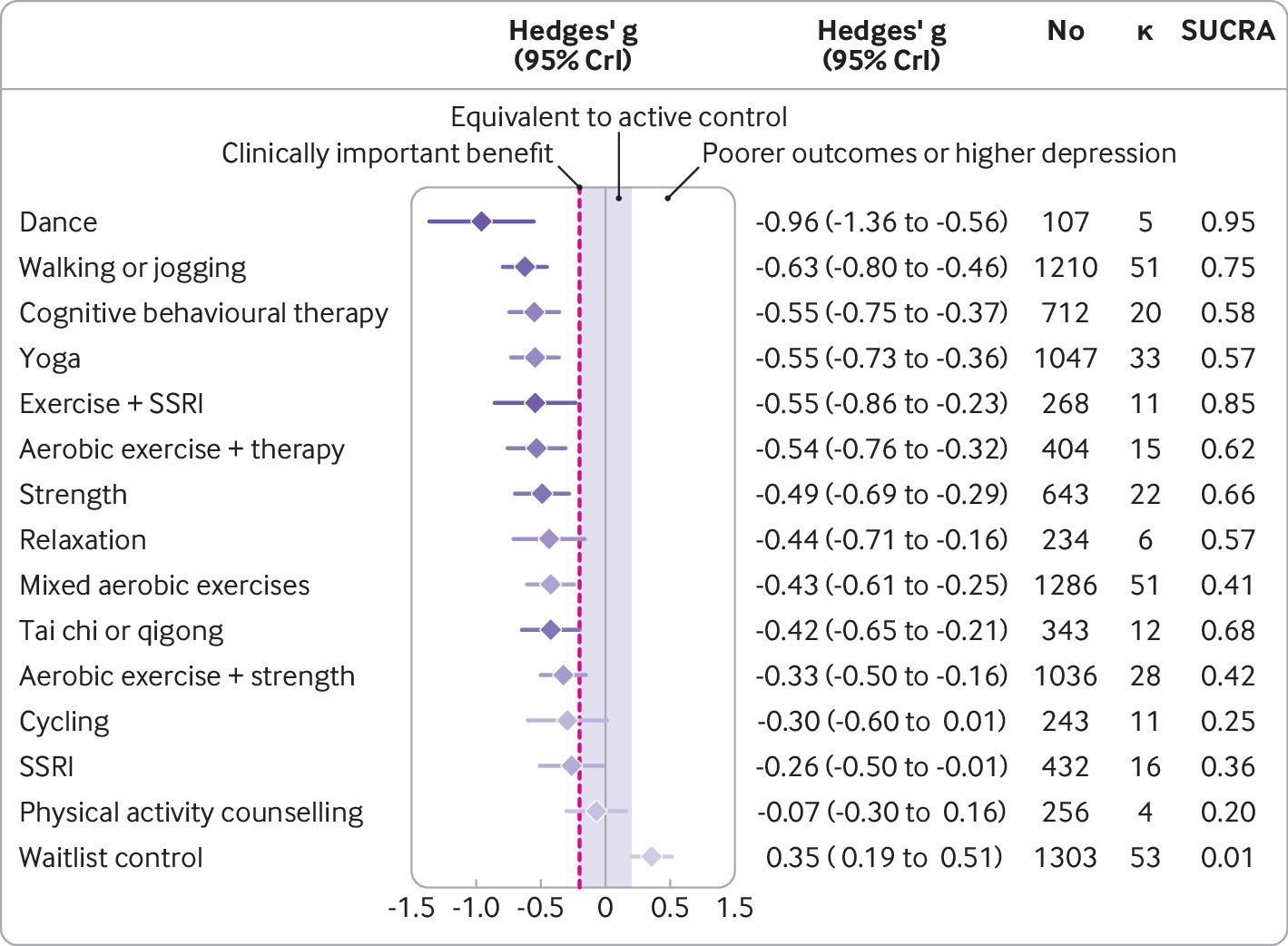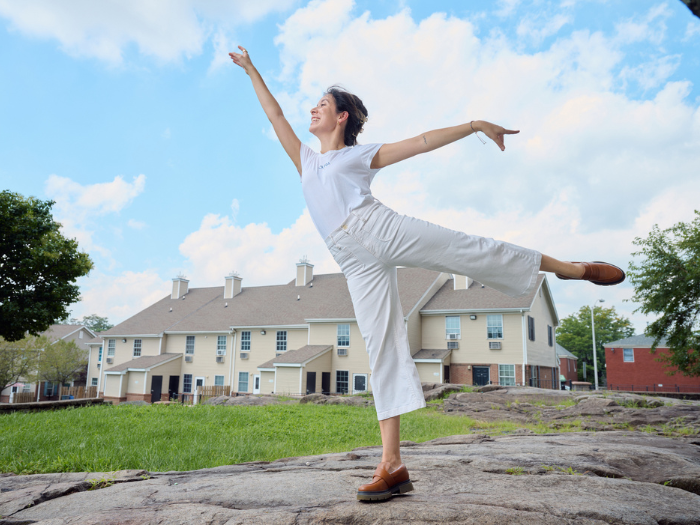When you’re feeling down, you might not feel like breaking it down on the dance floor. Yet according to recent research, busting a move might be an effective way to break out of a funk.
In a recent systematic review published in the British Medical Journal, researchers sought to identify which exercise modality is most effective in treating major depressive disorder. They compared the effects of exercise to psychotherapy, antidepressants, and control conditions.
The result: Various exercise modalities are effective in reducing symptoms of depression, including walking, jogging, mixed aerobic exercise, strength training, yoga, tai chi, qigong. Dance came out on the top of the list, with the caveat that the data was based on a low number of studies and participants compared to other exercises.
They also noted that effectiveness appeared to depend on the intensity level of the exercise, and was stronger for group exercise and interventions with clear “prescriptions.”
| Member Tip: With its improved accuracy, Oura’s Automatic Activity Detection feature has picked up “Dance” nearly 800,000 times the past six months — so if you do feel like getting your groove on, you’ll be in good company! |
LEARN MORE: Defining Low, Medium, and High-Intensity Movement & Using Oura to Track It
About the Analysis
While it has already been well-established in previous research that exercise is beneficial for depression, these researchers conducted a systematic review and meta-analysis of all randomized controlled trials that looked at the relationship between exercise and depression.
The analysis included 218 unique studies with a total of 495 groups or conditions and over 14,000 participants — more studies than many existing reviews on exercise for depression, the researchers note.
Key Findings
People who engaged in dancing had the greatest reductions in depression, followed by walking, jogging, yoga, strength training, mixed aerobic exercise, and tai chi or qigong.

Other findings include:
- Walking and jogging were effective for both men and women. Strength training was more effective for women, and yoga or qigong was more effective for men.
- Yoga was more effective for older adults, while strength training was more effective for younger people.
- There was a dose-response relationship between exercise intensity and the aforementioned benefits: the higher the intensity of the exercise, the more effective the outcome for depression management.
These findings indicate unique benefits of certain types of exercise for certain cohorts, potentially due to areas that may be contributing to depression. For instance, yoga and qigong are effective at alleviating stress and enhancing mind-body connection, effects that are perhaps more notable among men.
READ MORE: Defining Low, Medium, and High-Intensity Movement & Using Oura to Track It
Considerations
One caveat the researchers note: While dance does seem to be a “promising treatment for depression,” “the small number of studies, low number of participants, and biases in the study designs prohibits us from recommending dance more strongly.” This finding was evident in a fewer number of studies, and most participants were young women (88% female, mean age of 31). This means the findings may not be generalizable for different populations.
Discussion
While a systematic review can not uncover causal mechanisms, the researchers hypothesize about why exercise – particularly dance – is effective at treating depression. Here are some likely factors:
- Social interaction: Exercise can sometimes be a social experience – for example, a workout class or a running club. This immersion in social environments has been shown to reduce depression, even without the exercise component, which only adds even more benefits.
- Mindfulness: During exercise, you focus on the movement of your body, whether that’s following a dance instructor, or focusing on perfecting your form in a deadlift. This mind-body connection has a mindfulness effect, which can lower stress and improve mood.
- Increased self-efficacy: Numerous studies have shown a beneficial relationship between exercise and self-efficacy, which refers to belief in one’s own ability. When you show up and push yourself through a challenging workout, you prove to yourself that you’re capable.
- Immersion in green spaces: Exercise can be performed outside – think hiking, walking, or running. Time spent outdoors is associated with fewer depressive symptoms.
- Neurobiological mechanisms: When you exercise, blood flow increases, and neurotransmitters like endorphins, serotonin, and dopamine are released in your brain. Decreased cerebral blood flow is thought to be a mechanism that contributes to depression, and the endorphin release is a verified mood booster.
READ MORE: 7 Benefits of Regular Physical Activity & Easy Ways to Get More










